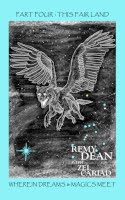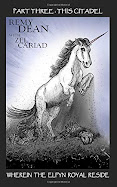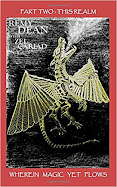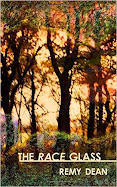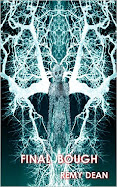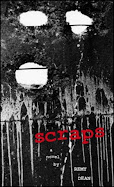It was the 70th anniversary of the atomic blast that levelled Hiroshima.
The sound of the ceremonial peace bell still chimed through the world media.
It somehow seemed fitting that my first visit to the space that I have been allotted in the house, at number 26 Augusta Street, Llandudno, was on this solemn day of remembrance, 6 August... Because, along with Hiroshima and Nagasaki, the firestorm created by the bombings of Dresden ranks as one of the decisive horrors of the Second World War.
 |
| RAF Marshall, Arthur William Tedder, 1st Baron Tedder, GCB, 1943 (picture courtesy, Imperial War Museum) |
The building now stands empty, its interiors hacked back to the brick. Like an evacuated, gutted house evoking the emptiness of those buildings in post-bomb Dresden, or the ground zero monument of Hiroshima. Now, that emptiness will be challenged by its antithesis: Creativity will transform the inner space once more. This year’s artists in residence are set to occupy those empty rooms and bring the dormant house back to life.
 |
| Ghost writer in residence at Haus of Helfa? |
So what does it mean to be the first writer in residence for Haus of Helfa?
It is all about art.
There are to be twelve ‘artists’ in residence, plus one ‘writer’.
So, is a writer not an artist?
Or, are writers a special type of artist?
What is art, and what is writing?
 |
| Label Your Words by Remy Dean (photograph of assemblage, 2015) |
To confuse matters – a diagram can be elevated in status to become a work of art and a shopping list could become a poem… depending on the skill of the creator, the context in which it is experienced, the intended meanings and the perceived meanings. Something to do with, as Charles Bukowski put it, STYLE, or with what William Blake described as the POETIC GENIUS. The style and poetic genius of the creator or/and the audience.
Artists are dealing with something beyond their means, wrestling or dancing with ideas that cannot be fully expressed by the physical tools at their disposal. They are hinting at something, exploring ideas that cannot, or should not, be fully expressed. A piece of art is on-going, never fully finished. After it leaves the domain of its maker, it continues its journey and begins to consolidate its meanings in the minds of the users – a conversation ensues between the work (and its intended meanings) and the viewer (and what is understood from it)… Art, therefore is a PROCESS.
A butterfly, fluttering across a meadow of summer flowers, its colours flashing in the sunlight, stirs the senses in a way that a pinned specimen in a museum drawer cannot, and the memory of seeing it can be more beautiful than the experience. A few words can evoke that scene in a very similar way as a skilled sketch may do. I just caught a butterfly in my mind and I gave it to you – is your butterfly the same as mine? I think mine was a comma, but its flight was so lively and joyous that I could not be sure.
The pinned specimen was different – a blue variety, and something I can also do is carefully blow the pale dust from its delicate, iridescent wings, unpin it from the display tray and hold it in the palm of my hand. Watch closely and… yes! Its wings tentatively move again, part closing then opening like the pages of a book that will not lay flat. It is delicate and shimmering in the light from the open window, little legs grip the very tip of my finger for a moment before it takes flight, the blue of its wings flashing against the blue of the sky as it flies free and far… we smile, until the bird swoops and takes it. Are we now happy for the bird to have something to feed its nestlings? Or are we saddened that a specimen that had sat in a dark dusty draw for more than a century only got to enjoy its miraculous resurrection and new found freedom for mere moments?
Do not worry, the bird was not really there – I made that bit up – we watched as the butterfly flew away, a diminishing fleck in the vast dome of bright sky… and was gone.
'The Visual Arts' is an often used term of differentiation.
From the very simple butterflies example above, we can see that text and writing are within the visual arts. See what I mean?
 |
| A is for 'Cow' (a manipulated vintage illustration) |
So, all visual arts are attempting to express something from the artist and elicit responses from the viewer. What differentiates each piece of work is the materials and languages used, and the codes conveyed. Writing began as the drawing of sounds, visually recording those sounds that make up words that are the codes of a language - and through the understanding, or at least an interpretation, of language a meaning is arrived at. Visual art also uses languages, such as theories of form and colour, there are codes, and through the interpretation of those codes a meaning is arrived at. Different interpretations = different meanings.
Let us start at the beginning, when drawing and writing were the same thing...
This meant ‘cow’:
 |
| A Cow |
“How much does that cow cost?”
“One cow, please.”
“I already have a cow…”
“Well that’s one cow you owe me.”
“Hang on a minute…”
When there arose a need for more permanently accurate records, ones that were harder to tamper with, clay was replaced with stone. It was more difficult to etch curves into harder materials, so the cow glyph was simplified and adapted into straight lines only.
 |
| Three Cows |
The letter for ‘cow’ survives to this day as the first letter of the Alphabet - a testament of the central importance of cows to ancient western societies.
F is for ‘cow’
It is the same story for the letter 'F' – adapted from Fehu, the first letter in the Viking Futhark, the ancient Germanic alphabet.
This glyph started out as a simplified pictograph of a bull or cow, seen from the side: a horizontal line representing the body of the animal with two upstrokes for horns. I see it as a cow fording a boundary river, as it is driven from the territory of one owner onto the land of its new owner.
 |
| Lucky Cow! |
Words become pictures become words become pictures.
B C N U xxx
PS: The shortest SF story ever, written by Forrest J Ackerman and first published in Vortex Magazine during the 1970s, was titled Cosmic Report Card: Earth and consisted of a single letter…
NB: Due to copyright, I am unable to reproduce the story here.
& so with that, I shall F off ...until next time.


.jpg)
